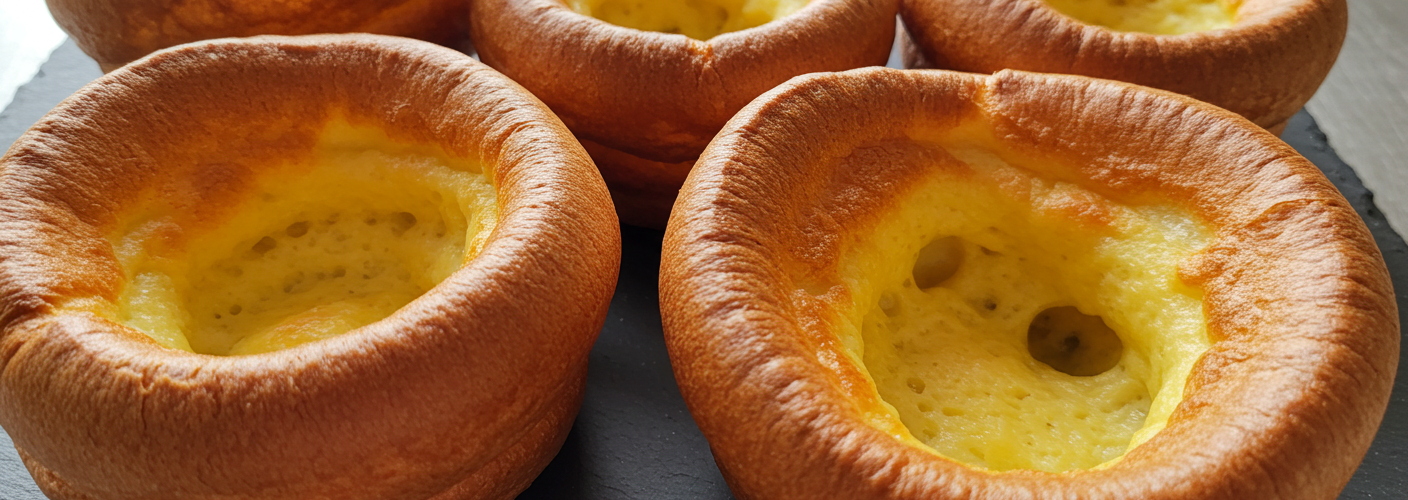Yorkshire puddings hold a special place in British cuisine, cherished not only for their savory flavor but also for their delightful texture and versatility. Originating from the county of Yorkshire in England, these golden-brown, airy delights have been a staple on dinner tables for centuries, especially paired with the traditional roast beef.
At their core, Yorkshire puddings are simple yet elegant creations made from a batter of eggs, flour, and milk or water. This basic formula yields a lightweight mixture that transforms into a fluffy, risen pudding when baked at high temperatures. The key to achieving the perfect Yorkshire pudding lies in the technique, particularly the temperature of the oven and the type of fat used for cooking.
To begin your Yorkshire pudding adventure, gather your ingredients: eggs, plain flour, and milk or water. A typical recipe would use equal parts of each ingredient, perhaps two eggs, a cup of flour, and a cup of milk, but you can adjust these ratios based on the number of servings you need. Remember, the batter should be well-mixed but not overworked; just like in many areas of cooking, balance is essential.
Once your batter is ready, allowing it to rest for about 30 minutes can enhance the final result, helping the puddings to rise dramatically. While the batter is resting, preheat your oven to a blazing 220°C (428°F). This high temperature is crucial because the sudden heat causes the batter to puff up beautifully in the oven.
For the cooking vessel, many traditionalists swear by a cast-iron pan, which retains heat exceptionally well and provides an excellent surface for achieving that characteristic crispiness. Preheat the pan, adding in a generous spoonful of fat—whether it’s beef drippings for that authentic flavor, vegetable oil, or even lard. The hot fat should shimmer and be ready to sizzle when you pour in the batter. Swiftly ladling the batter into the pan will ensure that each Yorkshire pudding gets its fair share of heat.
One of the artful delights of Yorkshire puddings is their remarkable adaptability. While they are traditionally served alongside a roast dinner, they can also be embellished in various ways. For a modern twist, Yorkshire puddings can be filled with savory ingredients like cheese, herbs, or even meats to create an impressive appetizer or snack. Alternatively, smaller versions called Yorkshire pudding bites can provide a fun addition to party platters.
Pair your Yorkshire puddings with rich gravy for the quintessential experience—this savory sauce complements the fluffy interior perfectly. Consider it part of the heartwarming ritual of a Sunday roast, bringing family and friends together around the table. When served alongside succulent roast beef, roasted potatoes, and seasonal vegetables, they become the stars of the meal.
In recent years, the Yorkshire pudding has found its way into various culinary trends, inspiring creative takes beyond tradition. You might encounter Yorkshire pudding wraps, where a pud serves as the vessel for beef and gravy, combining comfort food with convenience.
In summary, Yorkshire puddings embody both simplicity and sophistication. With just a handful of ingredients and a little patience, you can create these mesmerizing, puffy delights that pay homage to their rich heritage while offering a canvas for endless culinary creativity. Whether you enjoy them in their classic form or experiment with variations, Yorkshire puddings remain a beloved staple, bringing warmth and joy to every plate they grace.




Add comment